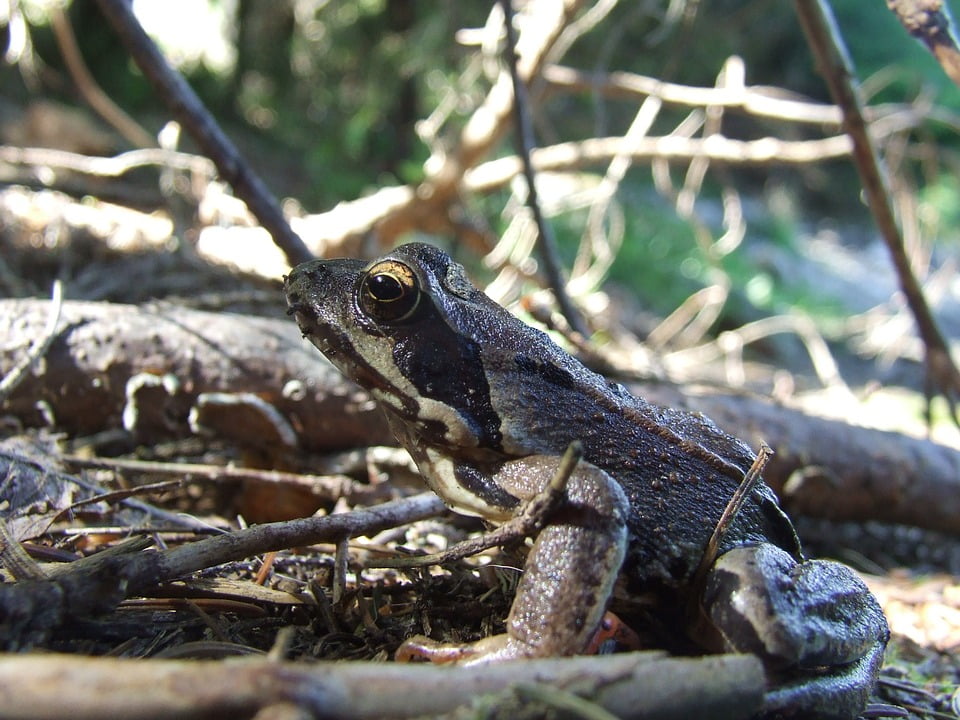
Traveling teachers used “four-shape” tune books with religious lyrics in which different-shaped note heads were assigned to the European musical scale of fa, sol, la, and mi. The “shape-note” singing tradition in Georgia began during the antebellum period as a way to teach congregations to sing. Sacred Harp sings date back to at least the 1860s in the Okefenokee. Others, such as quilting, palmetto broom making, turpentining, and Sacred Harp singing, are still practiced in the surrounding area. Some demonstrations, such as making lye soap and washing clothes with a “battlin’ stick,” are nostalgic re-creations of past folkways. At the annual Chesser Open House, for example, Chesser family descendants and neighbors gather to talk, eat a simple meal cooked on the homestead’s wood-burning stove, and share with visitors customs associated with life on Chessers Island. The Chesser Homestead on Chessers Island (outside Folkston) and other historic sites, such as Traders Hill (Folkston) and Obediahs Okefenok (Waycross), are focal points for family reunions and special community events. In recent years, persons whose families had connections to Billy’s Island, for example, gather for an annual potluck and exchange memories at the Stephen Foster State Park outside Fargo. Cothran: “See that honey a-sittin’ up there on the shelf? Well, I crossed my bees with lightnin’ bugs so they could see how t’ work at night, an’ they make a double crop o’ honey every year.” Stories about hunting and fishing, colorful characters of the past, and memories of growing up on one of the “islands” in the Okefenokee still abound in the region. Griffis, who died in 1968, entertained visitors to his fish camp outside Fargo with well-honed whoppers such as this tale, called “Odd Insects,” told to Kay L. Georgia’s best-known traditional storyteller was fishing guide Lem Griffis. The distinctive ecosystem of the great swamp is the subject of legends, tall tales, and personal experience narratives about bears, 'gators, and other encounters with the natural world. Beekeepers usually apprentice with other beekeepers, developing a keen knowledge of the woods, the habits of bees, and the rhythm of the seasons. The counties surrounding the Okefenokee are now home to the state’s largest commercial honey operations. Okefenokee families for years have taken advantage of the mild climate and large expanse of “honey plants” such as gallberry and tupelo gum to keep bees for honey. Henderson Library, Georgia Southern University. The Harpers were instrumental in the establishment of the Okefenokee National Wildlife Refuge in 1937, which ultimately resulted in the relocation of the swamp’s human inhabitants and ironically marked the end of the historic period of Okefenokee folklore that Harper had worked so hard to record.

Harper’s work with the “Okefinokee folk” (the spelling harks back to early maps) was completed by his widow, Jean, and folklorist Delma Presley with the publication of Okefinokee Album (1981).


Folkways and Storytelling Traditionsįrom 1912 to 1951 naturalist and folklore collector Francis Harper documented the traditions of European Americans living in and around the Okefenokee, including the region’s distinctive folk speech, tales, music, customs, home remedies, and beliefs.

Of these only the sacred music traditions continue in the region today. Oral accounts describe the work songs of gandy dancers (crews of Black railroad track layers), sacred music of Black churches, and the blues and juke joints of the Black turpentine camps. After the Civil War more Blacks were drawn to the interior of southeast Georgia by jobs in farming, turpentining, logging, and the railroad industry. In contrast to the widespread view that “there are no Indians in Georgia,” family folklore among these descendants suggests that some Indian people stayed in the Okefenokee area, hiding their heritage and intermarrying with early European American settlers.ĭuring the 1800s this region had one of the smallest African American populations in the state. Various traditional narratives deal with these topics, including accounts by present-day descendants of Indian people who fled to Fort Moniac on the St. Okefenokee Swamp Courtesy of Explore Georgia.įor periods in its history, the Okefenokee Swamp was a refuge for Indian people, fugitives from slavery, deserters during the Civil War (1861-65), and others seeking concealment.


 0 kommentar(er)
0 kommentar(er)
